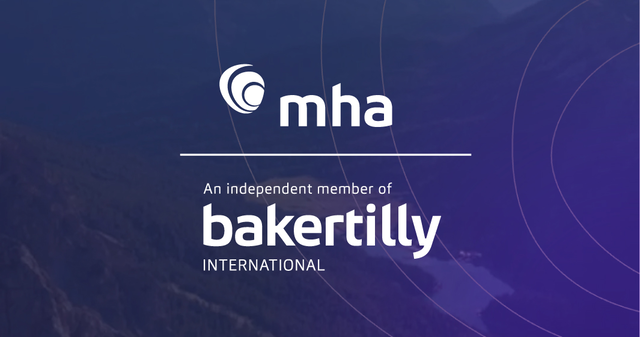From conversations with our customers and contacts at leading audit firms, we have noticed some frequently asked questions around Open Banking that keep coming up. How can Open Banking improve and boost, audit processes and capacities? We’ve compiled three common questions here, along with their answers.
1. How can Open Banking help eliminate wrong or incomplete information?
Incomplete or incorrect information can really throw a spanner in the works during and at the end of audit: when this issue is identified, additional time will need to be spent on acquiring the information or rectifying what is already there. For example, clients may not disclose all bank accounts or business entities right away, meaning extra time and effort is spent on ensuring completeness of information.
What can be done to mitigate this? Through a direct bank authorisation, auditors can access clients’ transactional data directly for all accounts they have been granted access to. Once ingested, this data can be matched to other data sources and used to identify outliers or generate insights, comfortable in the knowledge that the input data is complete to begin with.
A recent roundtable participant said: “That would be my dream, if it can ingest the general ledger and also all of the banking data to consolidate outliers, so I can see what is going through the system that isn’t hitting bank, but should do.” Technology such as Circit’s Verified Analytics matching engine can do just that, by leveraging our vast suite of connections to banks through our Verified Transactions module.
2. What are the implications of Open Banking for methodology and regulation?
The auditors we speak with see the possibilities and are optimistic about where technology is headed in helping them carry out their tasks or even go above and beyond what is expected. Nevertheless, there is also cautiousness around what embracing technology means for methodology and regulation, since regulation has a huge impact on audit and the commerciality of it.
From a recent conversation: “If I check everything, I will find lots of problems. If I find lots of problems, I will have to investigate those problems. That will be costly, and my client won’t pay for it. So how do you justify doing the extras, rather than checking just 10 transactions?”
Whilst regulation hasn’t quite caught up, there is increasing pressure and movement towards improvements in quality to mitigate risks of issuing incorrect audit opinions. Updates to ISA 315 and the introduction of ISQM 1, both of which most likely apply to December 2022 period ends onwards, are key examples of this.
Platforms such as Circit, specifically our Verified Transactions and Verified Analytics modules, provide access to scalable, repeatable testing that leverages Open Banking to verify transactions en masse. With ISQM 1 relating to proactively identifying and managing quality risks, and the Revised ISA 315 addressing the consideration of data analytics for risk assessment, there is a clear and pivotal role for this technology to be used to aid compliance and meet quality objectives.
We are already seeing how customers are using Open Banking through Verified Transactions to meet the requirements of ISA 500, which focusses on the source and reliability of evidence acquired, with Open Banking giving instant, secure access to independent third-party data.
Other customers are fulfilling the requirements of ISA 570 on Going Concern by instantly verifying cash balances and quickly analysing cash movements, allowing ongoing and accurate assessments to take place.
In conclusion, we’re starting to see how regulation is including technology and how new techniques enabled by these technologies are forming a crucial part of remaining compliant with the ever-changing regulatory landscape.
3. What tests can technology remove, replace, simplify or enrich?
The prospect of technology opening up new possibilities can be viewed as a challenge by some: now, auditors have to do everything they did before, plus ensure existing methodologies and frameworks remain compliant in a changing regulatory landscape. That brings us to the question of what processes, if any, technology can replace.
One of our recent roundtable participants said the following: “I feel like there are opportunities to replace specific audit tests such as valuation and recovery of aged debt. For example: if you have your debtor’s report and you match it all to post year end cash receipts before you start the audit, you immediately flag the key debtors you should talk about.”
There could also be a use case for payment recovery times. Are customers taking longer to pay? New information like this could form part of the going concern assessment of audit: customers paying later can be identified as a trend and can open up new opportunities for adding more insightful information for your clients.
Businesses that already have bank integrations can already see how their cash ties to their general ledger. But what is the next step?
Sam Bonser, Product Owner at Circit: “I remember my journals testing when I first started in audit: I would manually have to pick a random sample from the entire GL. How do I determine which entries to pick? With journals, audit firms are now taking a much more analytical approach, where they’re looking at the whole population, and using data analytics to focus their attention on the small subset of data within that may be irregular and may provide evidence of management override or fraud.
Open Banking provides the platform for obtaining 100% of your client’s banking data and have the same impact on other areas of an audit file by leveraging tools such as Verified Analytics to instantly match entire ledger data to the bank, for example by instantly verifying an entire entity’s income to cash receipts. The best-case scenario is you’ve done the vast majority of legwork on a key section of an audit file in a matter of seconds, and the worst case is you’ve identified a key area of concern and some anomalous transactions which can help better focus your attention on answering the objective of the test and forming a valid opinion.”
Conclusion
How can firms overcome these questions and challenges?
Open Banking provides a key opportunity to ensure continued compliance and improve quality throughout an audit file. We are guaranteed to continue seeing further regulatory revisions and an increased focus on technology as adoption continues to increase. Combined with the ongoing issues around resourcing in the industry, it can be difficult to find a way to easily access and realise the value of Open Banking in audit.
Fortunately, platforms such as Circit provide an easy-to-use solution to instantly access Open Banking technology, and begin to leverage it on audit files quickly, helping firms to realise value much quicker and focus on delivering quality engagements throughout their portfolio.















